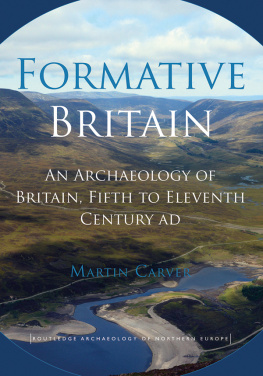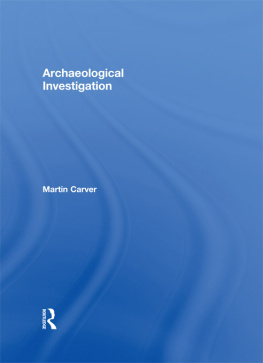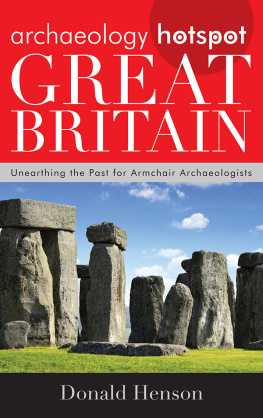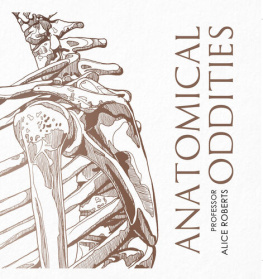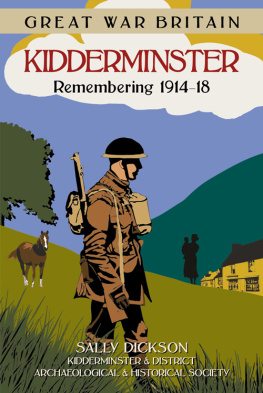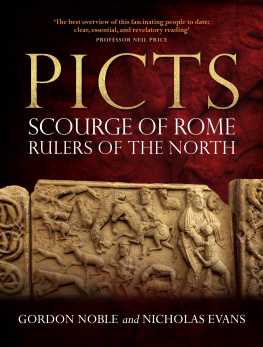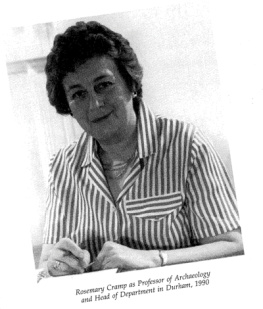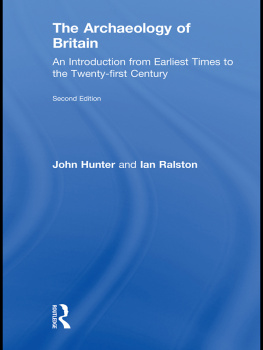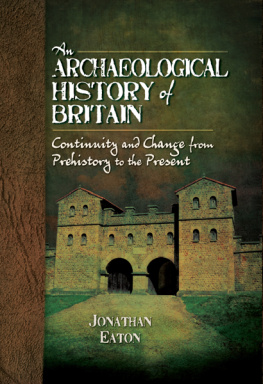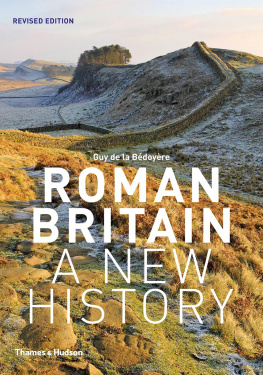Abulafia, D 2011 The Great Sea. A Human history of the Mediterranean (Oxford: Oxford University Press).
Addyman, P V 1976 Anglo-Saxon Archaeology and Society, in G de G Sieveking, I H Longworth and K E Wilson (eds), Problems in Economic and Social Archaeology (London: Duckworth), 309322.
Addyman, P V and D Leigh 1973 The Anglo-Saxon Village at Chalton, Hampshire: Second Interim Report, Medieval Archaeology 17, 125.
Addyman, P V, D Leigh and M J Hughes 1972 Anglo-Saxon Houses at Chalton, Hampshire, Medieval Archaeology 16, 1331.
Admiralty 1979 Admiralty Chart of the North Sea (London: HMSO).
Adomnn of Iona Life of St Columba , ed and trans and with an introduction by R Sharpe 1995 (Harmondsworth: Penguin).
Aitchison, N 1999 Macbeth: Man and Myth (Stroud: Sutton).
Aitchison, N 2006 Forteviot: A Pictish and Scottish Royal Centre (Stroud:Tempus).
Alciati, R 2011 And the Villa Became a Monastery: Sulpicius Severus Community of Primulacrum, in H Dey and E Fentress (eds), Western Monasticism Ante Litteram: The Spaces of Monastic Observance in Late Antiquity and the Early Middle Ages (Turnhout: Brepols), 8598.
Alcock, E 1988 Pictish Stones Class I: Where and How? Glasgow Archaeological Journal 15, 121.
Alcock, L 1963 Dinas Powys: An Iron Age, Dark Age and Early Medieval Settlement in Glamorgan (Cardiff: University of Wales Press).
Alcock, L 1972 By South Cadbury Is That Camelot: Excavations at Cadbury Castle, 19661970 (London and New York: Thames & Hudson).
Alcock, L 1973 Arthurs Britain (London: Penguin).
Alcock, L 1976 A Multi-disciplinary Chronology for Alt Clut, Castle Rock, Dumbarton, Proceedings of the Society of Antiquaries of Scotland 107, 103113.
Alcock, L 1987 Economy, Society and Warfare Among the Britons and Saxons (Cardiff: University of Wales Press).
Alcock L. 1988 The Activities of Potentates in Celtic Britain AD 500800 a Positivist Approach, in S T Driscoll and M Nieke (eds), Power and Politics in Early Medieval Britain and Ireland (Edinburgh: Edinburgh University Press), 4046.
Alcock, L 1993 Image and Icon in Pictish Sculpture, in R M Spearman and J Higgitt (eds), The Age of Migrating Ideas: Early Medieval Art in Northern Britain and Ireland (Edinburgh: National Museums of Scotland and Stroud: Sutton), 230236.
Alcock, L 2003 Kings and Warriors, Craftsmen and Priests in Northern Britain AD 550850 (Edinburgh: Society of Antiquaries of Scotland).
Alcock, L and E A Alcock 1987 Reconnaissance Excavations on Early Historic Fortifications and Other Royal Sites in Scotland, 197484: 2, Excavations at Dunollie Castle, Oban, Argyll 1978, Proceedings of the Society of Antiquaries of Scotland 117, 119147.
Alcock, L and E A Alcock 1992 Reconnaissance Excavations on Early Historic Fortifications and Other Royal Sites in Scotland, 197484; 5: A, Excavations and Other Fieldwork at Forteviot, Perthshire, 1981; B, Excavations at Urquhart Castle, Inverness-shire, 1983; C, Excavations at Dunnottar, Kincardineshire, 1984, Proceedings of the Society of Antiquaries of Scotland , 122(1992), 215287.
Alcock, L, E A Alcock and S Driscoll 1989 Reconnaissance Excavations in Scotland, 197484, 3: Excavations at Dundurn, Strathearn, Perthshire 197677, Proceedings of the Society of Antiquaries of Scotland 119, 189226.
Alcock, L, S J Stevenson and C Musson 1995 Cadbury Castle, Somerset. The Early Medieval Archaeology (Cardiff: University of Wales Press).
Alcock, N W and D Walsh 1993 Architecture at Cowderys Down: A Re-consideration, Archaeological Journal 150, 403409.
Alexander, D 2005 Redcastle, Lunan Bay, Angus: The Excavation of an Iron Age Timber-lined Souter-rain and a Pictish Barrow Cemetery, Proceedings of the Society of Antiquaries of Scotland 135, 41118.
Alexander, J J G 1978 Insular Manuscripts 6th to the 9th Century (London: Harvey Miller).
Alexander, M (ed) 1973 Beowulf: A Verse Translation (Harmondsworth: Penguin).
Allen, J R 1887 Christian Symbolism in Great Britain and Ireland (London: Whiting).
Allen, J R and J Anderson 1903 The Early Christian Monuments of Scotland , 3 volumes (Edinburgh: Society of Antiquaries of Scotland), reprinted 1993, 2 volumes (Balgavies: Pinkfoot Press).
Allen, M, N Blick, T Brindle, T Evans, M Fulford, N Holbrook and J D Richards 2016 The Rural Settlement of Roman Britain: An Online Resource (ADS: http://archaeologydataservice.ac.uk/archives/view/romangl/ accessed 12 March 17).
Anderson, A O 1922 [1990] Early Sources of Scottish History, AD 5001286 (Edinburgh: Oliver and Boyd).
Angenendt, A 1986 The Conversion of the Anglo-Saxons Considered against the Background of the Early Medieval Mission, Angli e Sassoni al di qua e al di l del mare; Settimane di studio del Centro italiano di studi sullalto Medioevo 32, 747781.
Angenendt, A 2008 Donationes Pro Anima : Gift and Countergift in the Early Medieval Liturgy, in J R Davis and M McCormick (eds), The Long Morning of Medieval Europe, New Directions in Early Medieval Studies (Farnham: Ashgate), 131154.
Armit, I 1999 The Abandonment of Souterrains: Evolution, Catastrophe or Dislocation? Proceedings of the Society of Antiquaries of Scotland 110, 346355.
Arnoldussen, S. and H Fokkens (eds) 2008 Bronze Age Settlement Sites in the Low Countries (Oxford: Oxbow).
Arrhenius, B and U OMeadhra (eds) 2011 Excavations at Helg XVIII Conclusions and New Aspects (Stockholm: Kungl. Vitterhets Historie och Antikvitets Akademien).
Arwidsson, G 1977 Valsgrde 7 (Uppsala: Uppsala Universitets Museum fr Nordiska Fornsaker).
Ashby, S P 2013 Making a Good Comb: Mercantile Identity in Ninth to Eleventh-century England, in L Ten-Harkel and D M Hadley (eds), Everyday Life in Viking Towns: Social Approaches to Towns in England and Ireland c. 8001100 (Oxford: Oxbow), 193208.
Ashby, S P 2014 Technologies of Appearance: Hair Behaviour in Early Medieval Europe, Archaeological Journal 171, 151184.
Ashmore, P 1980 Low Cairns, Long Cists and Symbol Stones, Proceedings of the Society of Antiquaries of Scotland 110, 346355.
Ashmore, P 1999 Radiocarbon Dating: Avoiding Errors in Dating by Avoiding Mixed Samples, Antiquity 73, 124130.
Ashmore, P 2000 A Radiocarbon Database for Scottish Archaeological Samples, Radiocarbon 42(1), 4148.
Astill, G 2000 General Survey 6001300, in D M Palliser (ed), The Cambridge Urban History of Britain (Cambridge: Cambridge University Press), 2749.
Astill, G 2006 Community, Identity and the Later Anglo-Saxon Town, in W Davies, G Halsall and A Reynolds (eds), People and Space in the Middle Ages, 3001300 (Turnhout: Brepols), 233254.
Astill, G 2009 Anglo-Saxon Attitudes: How Should Post-AD 700 Burials Be Interpreted? in D Sayer and H Williams (eds), Mortuary Practices and Social Identities in the Middle Ages (Exeter: University of Exeter Press), 222235.
Avent, R 1975 Anglo-Saxon Garnet Inlaid Disc and Composite Brooches (BAR British Series11) (Oxford: British Archaeological Reports).
Avent, R and V I Evison 1982 Anglo-Saxon Button Brooches, Archaeologia: Or Miscellaneous Tracts Relating to Antiquity 107, 77.
Backhouse J, D H Turner and L Webster (eds) 1984 The Golden Age of Anglo-Saxon Art 9661066 (London: British Museum).
Bailey, R N 1988 The Meaning of Mercian Sculpture (6th Brixworth Lecture) (Leicester: University of Leicester).
Bailey, R N 2005 Anglo-Saxon Sculptures at Deerhurst (Deerhurst Lecture 2002) (Deerhurst: Friends of Deerhurst Church).
Bailey, R N 2010 Cheshire and Lancashire (Corpus of Anglo-Saxon Stone Sculpture Volume IX) (Oxford: Oxford University Press for The British Academy).
Bailey, R N and R Cramp 1988 Corpus of Anglo-Saxon Stone Sculpture Volume II Cumberland, West-moreland and Lancashire-north-of-the-sands (Oxford: Oxford University Press for The British Academy).

